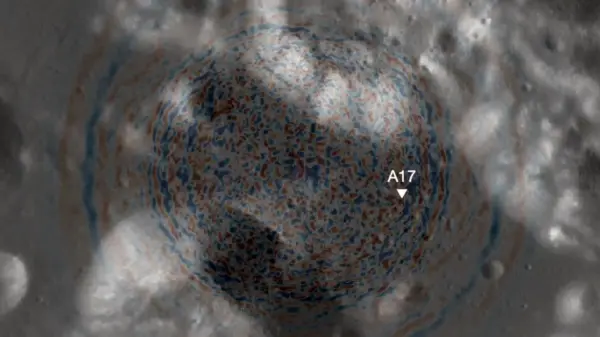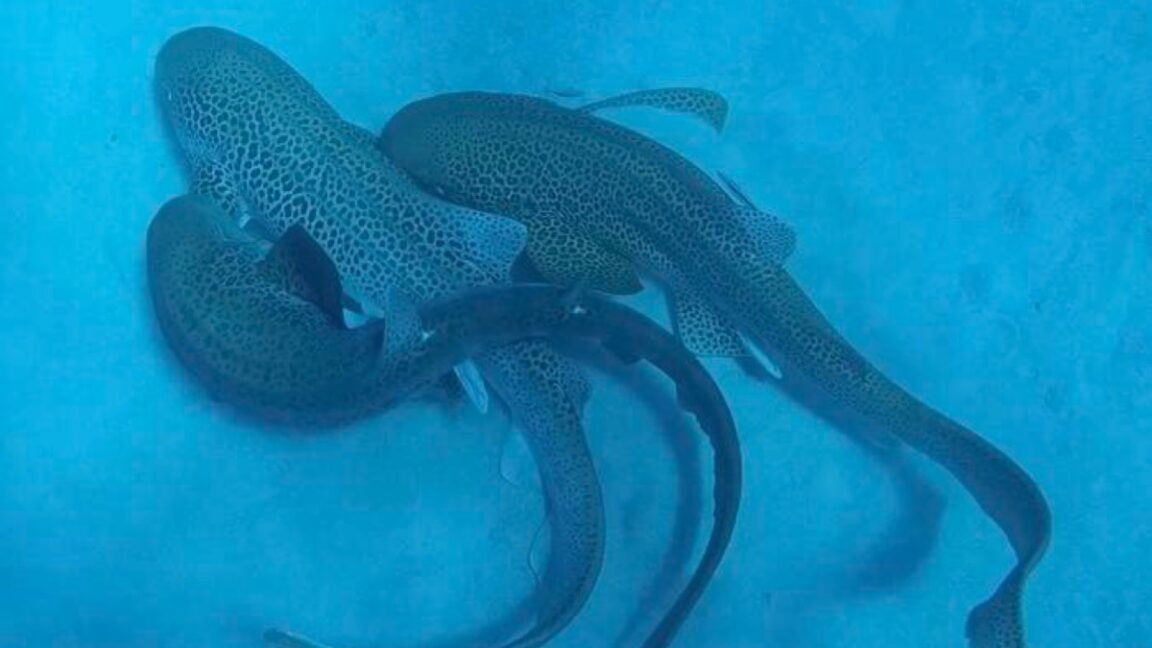Scientists have successfully documented a rare mating sequence involving three leopard sharks—two males and one female—in the wild off the coast of Nouméa, New Caledonia. This significant observation, described in detail in a paper published in the Journal of Ethology, marks a pivotal moment in understanding the behavior of this endangered species. Until now, most knowledge regarding leopard shark mating has stemmed from studies conducted in captivity, leaving a gap in data about their natural behaviors.
Hugo Lassauce, a postdoctoral researcher at the University of the Sunshine Coast (UniSC), led the team that achieved this remarkable feat. For a year, Lassauce had been monitoring sharks in the region as part of a collaboration with the Aquarium des Lagons. Despite previous encounters that hinted at mating behaviors, he had not observed the entire sequence until this occasion.
While snorkeling, Lassauce noticed a female leopard shark resting on the seabed, accompanied by two males demonstrating classic courtship behavior. He recalled, “I told my colleague to take the boat away to avoid disturbance, and I started waiting on the surface, looking down at the sharks almost motionless on the sea floor.” After about an hour, the male sharks began their mating sequence, which unfolded rapidly. The first male took approximately 63 seconds to mate, followed by the second male, who took 47 seconds.
Technical Challenges and Rare Footage
Lassauce utilized two GoPro Hero 5 cameras to capture the sequence, though he faced challenges with battery life. The video footage, which features two interruptions, captures the entire mating event. The first interruption occurred when he switched cameras due to a low battery warning, and the second was a deliberate pause to conserve the remaining camera’s power. The extended pre-copulation stage saw all three sharks remaining still on the seafloor for nearly an hour before the mating commenced.
The entire sequence highlighted the unique dynamics of leopard shark reproduction. After the male sharks completed their mating, they lay still on the ocean floor, while the female swam away. This documentation not only provides vital insights into leopard shark behavior but also indicates that this area may serve as a critical mating habitat.
Implications for Conservation
The findings raise important questions about genetic diversity in leopard sharks. Co-author Christine Dudgeon, also from UniSC, stated, “From a genetic diversity perspective, we want to find out how many fathers contribute to the batches of eggs laid each year by females.” Understanding the mating patterns can inform conservation strategies and artificial insemination efforts aimed at repopulating leopard sharks in Australia and other regions.
The ability to observe this rare event underscores the importance of marine research and conservation efforts. As the team celebrated their success, they recognized that these observations could ultimately contribute to more effective strategies for protecting this endangered species. The significance of capturing such a rare occurrence cannot be overstated, providing a glimpse into the natural behaviors of leopard sharks that have remained largely undocumented in the wild.
This groundbreaking research is set to pave the way for future studies aimed at enhancing our understanding of leopard shark ecology and supporting their conservation.





































































